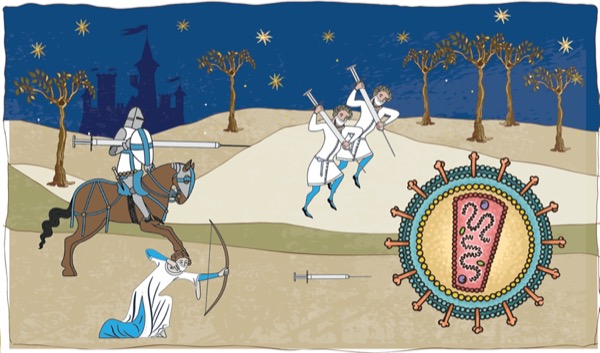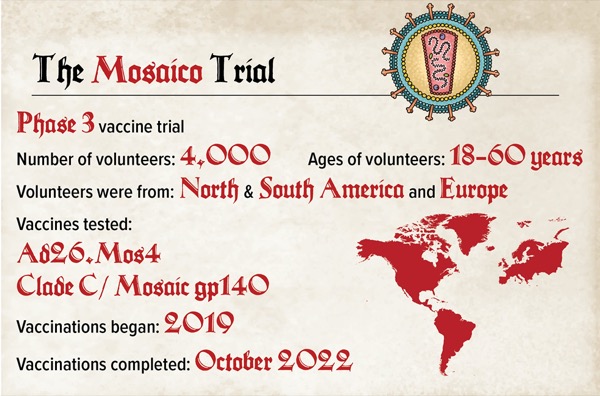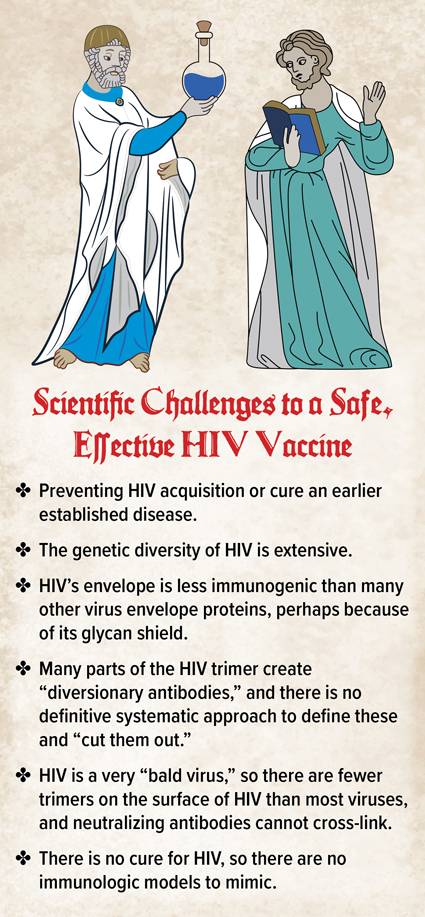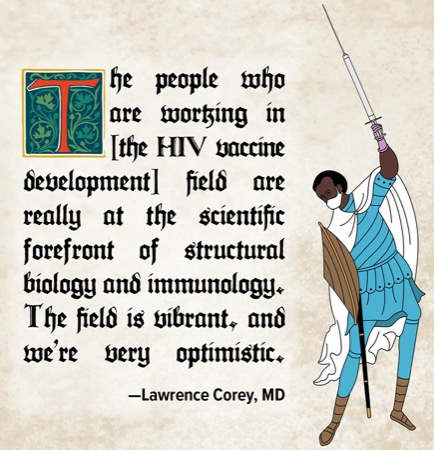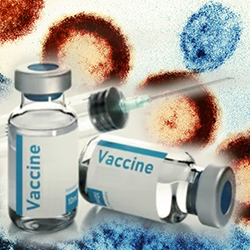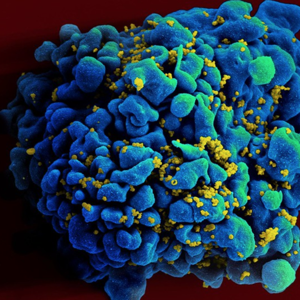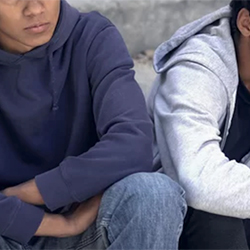In 1984, former Health and Human Services Secretary Margaret Heckler declared there would be an HIV vaccine within two years. People are still waiting, and many thought that the announcement early this year by Janssen Pharmaceuticals that it was discontinuing the MOSAICO HIV vaccine trial was a death knell to the quest.
Although the announcement was disappointing, experts at CROI 2023, held in Seattle, said the work on an HIV vaccine was not over. Several people are still working on the quest, and so there is still hope.
Last year, the National Institute of Allergy and Infectious Diseases (NIAID) launched a phase 1 clinical trial evaluating three experimental HIV vaccines based on an mRNA platform—the same technology used to develop some of the COVID-19 vaccines. The trial is expected to end this summer.
“Finding an HIV vaccine has proven to be a daunting scientific challenge,” said Anthony S. Fauci, MD, the former NIAID director. “With the success of safe and highly effective COVID-19 vaccines, we have an exciting opportunity to learn whether mRNA technology can achieve similar results against HIV infection.”
The investigational HIV vaccine regimen evaluated in the Mosaico trial was found to be safe but did not protect against HIV acquisition among men who have sex with men (MSM) and transgender people, leaving the door open for a much-needed safe and effective HIV vaccine, according to data shared at CROI.
The Mosaico Trial
Beginning in 2019, the Mosaico trial (HPX3002/HVTN 706; ClinicalTrials.gov Identifier: NCT03964415) enrolled nearly 4,000 volunteers (ages 18-60 years) in North America, Europe and South America.
Developed by Janssen Pharmaceuticals, the experimental vaccine was based on mosaic immunogens—vaccine components featuring elements of multiple HIV subtypes.
“Mosaico was a phase 3 vaccine trial using a vaccine regimen that included a tetravalent mosaic Ad26 vaccine, along with a gp140 bivalent vaccine that included both a clade C and a mosaic gp140,” explained Susan Buchbinder, MD, the director of HIV prevention research in the San Francisco Department of Public Health.
The goal was to introduce immune responses against an array of global HIV strains. The regimen included four injections of Ad26.Mos4.HIV over the span of one year. The vaccine candidate used adenovirus serotype 26 (Ad26) for the delivery of mosaic immunogens.
The final two injections were supplemented with a bivalent HIV envelope protein formulation. The formulation combined clade C gp140 and mosaic gp140 envelope proteins, adjuvanted by aluminum phosphate to boost an individual’s immune responses.
All vaccinations were completed in October 2022.
Access to PrEP
During the study, participants were given access to comprehensive HIV prevention tools, including pre-exposure prophylaxis (PrEP). If participants acquired HIV, the study staff promptly referred them for medical care and treatment.
For handling PrEP during the study, they consulted with the community, ethicists and clinical trialists, Dr. Buchbinder said.
“What we decided was because PrEP is so highly effective, we wanted to first navigate people who were interested in the trial to PrEP. So, everyone had access then to PrEP, and they were counseled about PrEP to begin with,” she said. “Those people who decided that PrEP was not a good option for them were then told about the trial and were able to enroll in the study. And then during the trial, participants who were interested in PrEP, they continued to get risk-reduction counseling, including information about PrEP.”
During a scheduled data review, an independent data and safety monitoring board (DSMB) determined that although there were no safety issues concerning the vaccine candidate, it was not effective in protecting against the acquisition of HIV. Researchers reported the number of HIV infections were the same in both the treatment and placebo arms.
“The unfortunate news was that there was no efficacy seen from the results of the trial, and the HIV infection rates were actually quite high. It was an incidence rate of 4.1 per 100 person-years, so basically a 4.1% per year infection rate in both the vaccine and the placebo arm,” Dr. Buchbinder said.
She noted infection rates were higher among younger people and certain minority groups.
“Despite ongoing risk-reduction counseling and linkages to PrEP, HIV incidence, particularly in young participants in Latin America, was very high. This is a population in great need of additional effective HIV prevention modalities,” Dr. Buchbinder said.
Based on the DSMB’s decision, the trial was discontinued.
The DSMB’s determination echoes the result of the phase 2b trial, Imbokodo trial (HPX2008/HVTN 705; ClinicalTrials.gov Identifier: NCT03060629), in which a DSMB decided in 2022 that a similar vaccine regimen was safe but did not provide protection against HIV acquisition among young women in sub-Saharan Africa.
Choose Your Fighter
The NIAID phase 1 clinical trial mentioned by Dr. Fauci is an open-label, multicenter, randomized study to evaluate the safety and immunogenicity of three mRNA HIV vaccine candidates: BG505 MD39.3 mRNA, BG505 MD39.3 gp151 mRNA and BG505 MD39.3 gp151 CD4KO mRNA (ClinicalTrials.gov Identifier: NCT05217641). Starting in February 2022, researchers have enrolled more than 100 participants, who will be administered doses of 100 or 250 mcg of either of the three regimens by intramuscular injections into the deltoid muscle.
The researchers will evaluate patients’ safety and their immune responses through blood and lymph node fine needle aspiration collected at specified study checkpoints. A dose-escalation plan will be in place, according to the team. Sentinel safety groups for each of the three low-dose groups in Part A will be enrolled and evaluated two weeks after first receiving a vaccination. Enrollment for Part B sentinel groups and the rest of the participants of Part A can begin if the safety criteria are met.
Part B’s sentinel group participants also will be assessed for safety after receiving the first vaccination before being fully enrolled in Part B. Standard safety evaluations will additionally be routinely performed throughout the trial, the researchers noted.
“Each investigational vaccine candidate is designed to present the spike protein found on the surface of HIV that facilitates entry into human cells. Each of the experimental vaccines encodes for different but highly related, stabilized proteins. None of the three vaccine candidates can cause HIV infection,” NIAID explained in a press statement.
The mRNA sequences in the three HIV vaccine candidates were designed and developed at the NIAID-funded Scripps Consortium for HIV/AIDS Vaccine Development at the Scripps Research Institute and the Bill & Melinda Gates Foundation–funded IAVI Neutralizing Antibody Center at Scripps in collaboration with Moderna. NIAID contracted Moderna to manufacture the investigational vaccines. The researchers anticipate the trial to be completed in July.
Difficult to Build the Armor
HIV is a wily opponent, and there are several reasons why the development of a vaccine has been so difficult from the genetic diversity to its stealthiness.
“One of the issues with an HIV vaccine is that we actually need to prevent one from acquiring HIV in the first place,” rather than just mitigate serious disease or prevent hospitalization as is done with influenza and COVID-19 vaccinations, Lawrence Corey, MD, a faculty member of Fred Hutchinson Cancer Research Center and the former president of Fred Hutch, in Seattle, said during a CROI press briefing.
“Now, in COVID, we designed these vaccines to actually prevent symptomatic disease, so you got infected, but you ameliorated your disease where you did not even notice that you’ve had symptomatic disease, but you still could get infected. With HIV, we know integration occurs right away, so that’s a higher bar and a harder-to-achieve target.”
In another CROI session, Dr. Corey described some of the additional scientific challenges for the construction of an effective HIV vaccine:
- The genetic diversity of the HIV virus is extensive.
- HIV’s envelope is less immunogenic than other virus envelope proteins, perhaps because of its glycan shield.
- Many parts of the HIV trimer create “diversionary antibodies,” and there is no definitive systematic approach to define these and “cut them out.”
- There are fewer trimers on the surface of HIV virus than most viruses and neutralizing antibodies cannot cross-link.
- There is no cure for HIV, so there are no immunologic models to mimic.
“We have seven or eight different candidate vaccines that are out there … currently being tested in the next year or two that will actually [add clarity to] whether we can achieve the level of neutralizing antibodies. It will be a vaccine in which the first immunogen is going to be different from the second immunogen, which is going to be different from the third immunogen. … Like with COVID, you have three doses of ancestral strain of mRNA or J&J [Johnson and Johnson], etc.,” Dr. Corey said. “With this vaccine, we know to elicit these neutralizing antibodies, we actually have to give different immunogens each time, so it’s going to be complicated; it will take us a little time.”
The Endgame
The mRNA technology provides researchers with a lot of flexibility in making particles, Dr. Corey noted.
However, two technologies will be required to produce a safe and effective HIV vaccine. He explained the distance from the trimers on HIV is too far for an antibody to travel, so it only can latch on to one, and may fall off easier. That antibody has to mature and latch on much harder than it would to another virus.
“The virus is sort of a ‘bald’ virus. You have seen the picture of the coronavirus, that has all of these red things that are right next to each other, so an antibody can latch on [to one spike] and can spread its wings, latching on to two trimers,” he told Infectious Disease Special Edition. Those spikes are farther apart on HIV.
Dr. Corey also explained with the COVID-19 vaccines, which make neutralizing antibodies, levels of around 50 are associated with 90% protection. However, it takes levels above 200 to be protected against HIV, marking a significant scientific challenge.
“We actually know broadly neutralizing antibodies prevent [HIV] acquisition. We are also working on taking those monoclonal antibodies just like we did in COVID, making them and then infusing them in passive administration—just like Evusheld [tixagevimab+cilgavimab, AstraZeneca],” Dr. Corey said.
HIV is stealthy, and once in the body, it remains there forever. As a retrovirus, HIV has “an incredible number” of stealth aspects to its envelope and glycan shield, and all of those aspects have yet to be discovered, he admitted.
However, Dr. Corey remains optimistic a safe and effective HIV vaccine regimen is on the horizon.
“The people who are working in this field are really at the scientific forefront of structural biology and immunology. The field is vibrant, and we’re very optimistic,” Dr. Corey said.
Although there will not be an HIV vaccine soon, Carl Dieffenbach, MD, the director of the Division of AIDS at NIAID, said early stage vaccines are still in clinical trials, and they need participants. Anyone interested in learning more should visit the HIV Vaccine Trials Network website (https://www.hvtn.org).
For more from Dr. Corey about the future of HIV development, check out the video on the IDSE website, “The Path Forward in HIV Treatment and Vaccine Development” (https://www.idse.net/Multimedia/Article/02-23/The-Path-Forward-in-HIV-Treatment-and-Vaccine-Development/69518).
The Mosaico study was sponsored by Janssen Vaccines & Prevention B.V. and financially supported by NIAID, part of the National Institutes of Health. Additional study support was provided by the U.S. Army Medical Research and Development Command. Dr. Buchbinder reported grant funding from Gilead, GSK and ViiV. Dr. Corey reported no relevant financial disclosures.
This article is from the May 2023 print issue.


